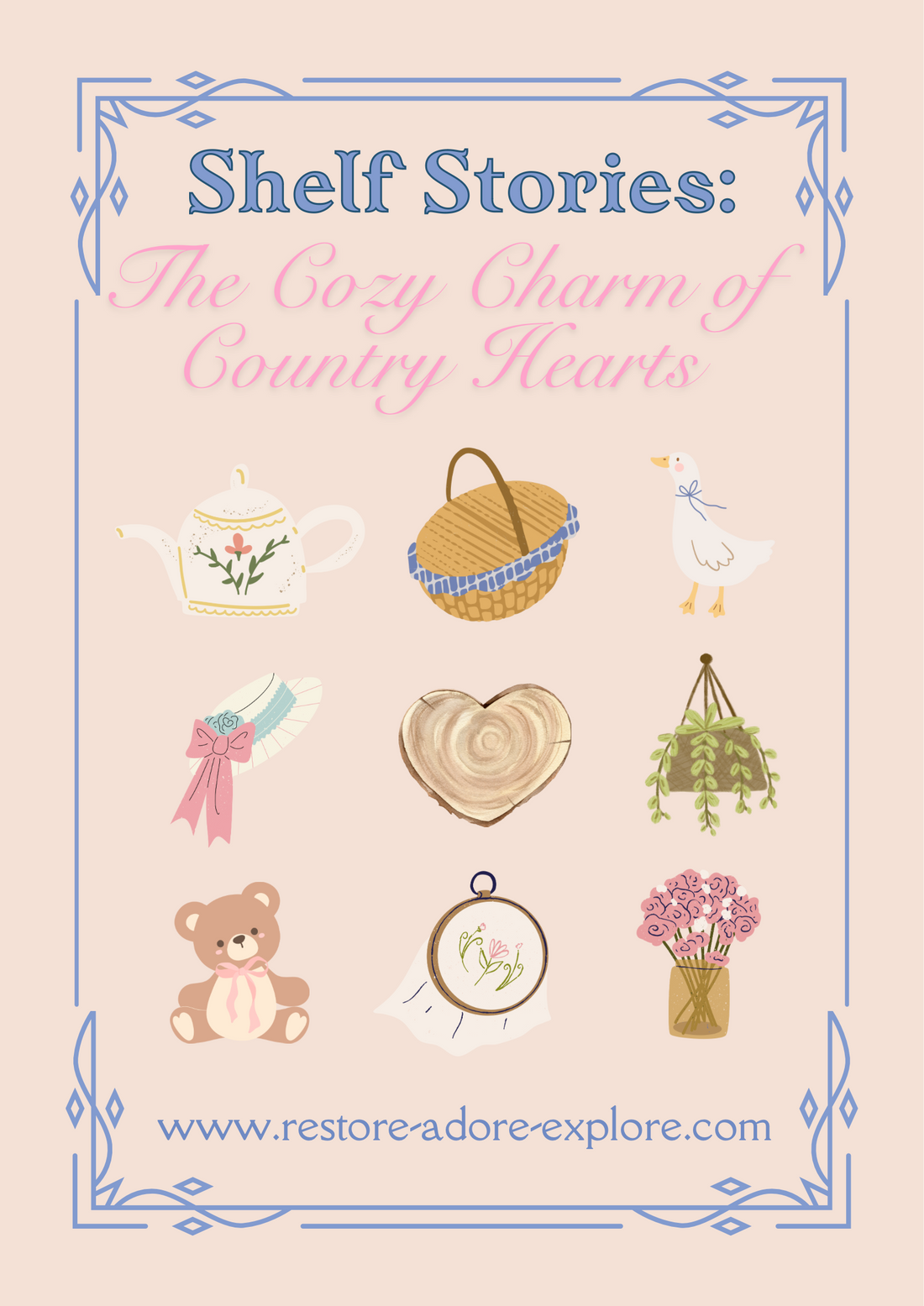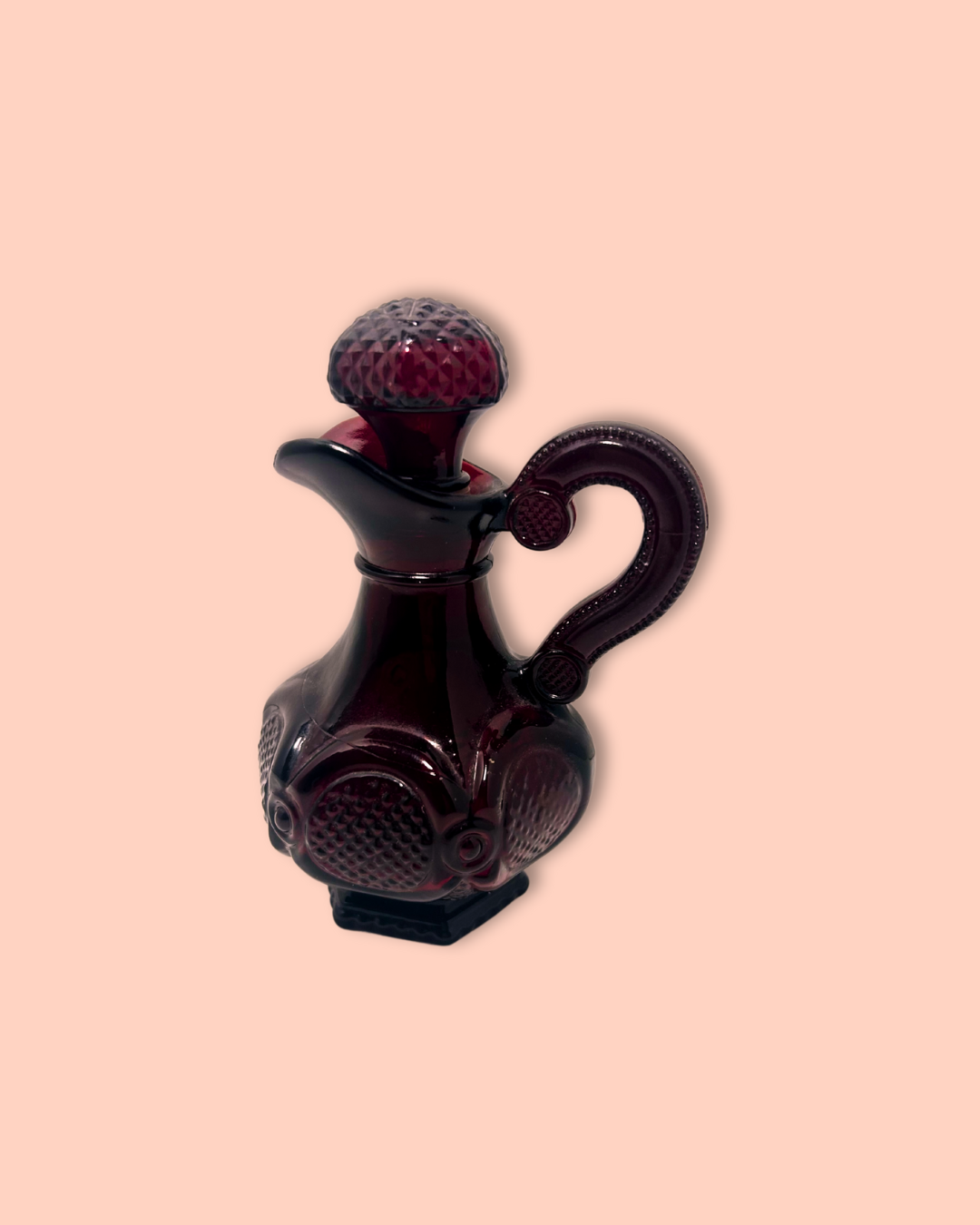
Shelf Stories: The Cozy Charm of 1980s Country Hearts
Share
When I would visit my great-grandparents and extended family growing up, I always saw wood paneling, wooden trinket shelves, Longaberger baskets, and those wooden shelves with heart-shaped cutouts. Recently, as I’ve been dipping my toe into the resale and antique industry, I’ve noticed a rising interest in these country heart accents. With the resurgence of Cottagecore and Grannycore, many of the styles that once graced the walls of my family’s country homes are showing up

For me, it brings a sense of warmth and nostalgia—but I started wondering: Why has this style become popular again? And why was it so beloved in the first place?
Continue reading for the history of Country Hearts…
Where Did Country Hearts Come From?
It’s hard to pinpoint the exact origins of the country hearts style. I searched the internet, asked ChatGPT, and even scoured the Libby app—but I found no conclusive answers. Maybe they weren’t as historically significant as I thought?
So, I decided to go straight to the source: my grandma. She had gifted me a few of these shelves a while back, so I asked her what she remembered. And… nothing. It wasn’t her style, and she didn’t recall much about them at all. We reminisced a bit about wood-covered everything and Longaberger baskets, but all she could tell me was that the shelves were mostly homemade—a popular DIY project in the ’80s and ’90s.
So with no clear documentation, I had to start drawing my own connections.
Origins: Folk Art
It seems this style may have its roots in American folk art traditions, particularly those from the Southeast. (And yes, we could trace influences even further back—but let’s start there.)

These styles were influenced by traditional Native American art, which blended with the aesthetics of Scottish, Irish, and German immigrants during early U.S. colonization. That blend, in turn, merged with artistic expressions from Black American artists during and after the transatlantic slave trade. Folk art grew out of these deeply intertwined and often marginalized cultures—especially in impoverished areas like the Appalachian Mountains.
“Black folk artists are an integral component in the narrative of the genre and cannot be overlooked. Colonial histories, lost heritage, rebuilding communities, and issues of race meld into artworks and provide needed diverse voices in folk art.” — Art.com
Many of the materials and techniques used—basketry, pottery, wood carving—were accessible and often practiced by women.
“As with many women artists throughout the canon of art history, expertly made works can sometimes be lacking attribution... Museums like the American Folk Art Museum design programming around folk art masterworks including unknown artists... to celebrate these unsung heroes of the art form.” — Art.com
Folk art is often misunderstood as amateur or merely “craft,” and so were the communities it came from—often dismissed as poor or uneducated.
“Folk artists can be outsiders within their own communities whether by gender, race, or ability, and have a distinct perspective of their community life that they seek to express.” — Art.com

(Photo: https://thelaurelofasheville.com/arts/american-folk-art-presents-a-few-of-our-favorite-things/)
Enter the 1980s
By the 1980s, collecting folk art—made by untrained, often older, and economically marginalized people—became a full-on trend.
“The Rev. Howard Finster, a celebrated Georgia visionary artist, collaborated with high-profile bands like R.E.M. and Talking Heads. Shortly afterward, Finster’s profile rose higher with an appearance at the Venice Biennale, one of the world’s most famous exhibitions of contemporary art.” — OurState.com
The crude techniques and raw emotion of folk art resonated with people, even if it didn’t conform to traditional art markets.
“There are no rules to folk art. You don’t have to have education to understand it or appreciate it.” — OurState.com



(Photos: March 1986 issue of Country Living)
At the same time, designer Laura Ashley brought her romanticized English countryside aesthetic to the U.S. Her brand took off, popularizing the soft, floral, wicker-filled decor we associate with 1980s country style. Laura Ashley was a major influence on the farmhouse decor trend that swept American homes.
“But there was something quaint about that country look, and when done well, elegance even crept in... Country enthusiasts may have held onto their oak furniture but likely changed a wall color or throw pillow, transitioning into new trends like Shabby Chic.” — Mirror80.com

(Photos: Laura Ashley style 1987)
Shabby Chic and the Softening of Country Decor
Shabby Chic—coined by designer Rachel Ashwell—emerged as a cozy evolution of ’80s country style.
“Shabby chic is an interior decorating style that blends vintage and cottage elements in soft, romantic colors and textures to create an elegant, yet worn and welcoming look.” — The Spruce
“Shabby chic is all about living in comfort and age-old charm... It can cozy up a space without working too hard.” — Amy Leferink via The Spruce
“I like that juxtaposition of having a humble home, maybe a little cottage, but giving it that twinkly kind of glamour.” — Rachel Ashwell, HouseBeautiful.com

(Photo: loveproperty.com)
Shabby Chic allowed people to blend nostalgia with a sense of glamour, offering a middle ground between traditional and contemporary—between high-end design and accessible, lived-in charm.
The 2020s Revival of Country, Cozy, and Cottage Decor
Then came the pandemic.
Suddenly, we were all stuck at home, staring at our walls. It became more important than ever to create spaces that felt comforting, personal, and safe.
This sparked a renewed interest in homey aesthetics: Cottagecore, Maximalism, and good old-fashioned nostalgia.
I’ve always been a fan of mid-century modern styles from the ’60s and ’70s, which dominated the 2010s. But now we’re seeing a shift—back to the maximalist, sentimental styles of the ’80s. Think country geese, wooden accents, clashing florals, and cozy glamour.
“The resurgence of this ultra-expressive aesthetic is at least partly due to social media fatigue and over saturation,” says designer Brad Thornton. — HouseBeautiful.com

(Photo: https://www.homesandantiques.com/interiors/decorating/what-is-cottagecore)

(Photo: https://www.bhg.com/cottagecore-decorating-ideas-6831706)
And so, it’s no surprise that the simple wooden heart shelves from the 1980s are back in demand.
Where to Find Them
These pieces were rarely mass-produced, and that’s still true today. You’ll have to seek them out secondhand—at thrift stores, estate sales, or even in your grandma’s attic.
You can find a few pieces for sale on our site here. But the thrill is in the hunt. These humble little hearts might be hiding in plain sight, just waiting to be loved again.

(Photo: https://thriftedwickerbasket.com/products/vintage-wooden-4-shelf-spice-rack-with-heart-cutout)

(Photo: https://shop.brandland.co.nz/products/vintageheartshelfcupboard)
References:
-
https://art.art/art-history-101-folk-art-in-modern-art-history
-
https://www.ourstate.com/collecting-and-preserving-southern-folk-art-in-hickory/
-
https://amityworrel.com/2021/04/13/1980s-interior-design-is-coming-back-in-style-for-the-2020s/
-
https://www.housebeautiful.com/design-inspiration/a64387590/new-nostalgia-1980s-design-trend/
